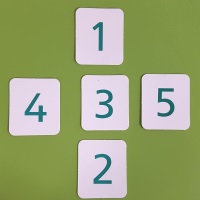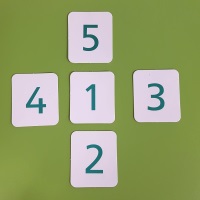Skip over navigation



Or search by topic
Number and algebra
Geometry and measure
Probability and statistics
Working mathematically
Advanced mathematics
For younger learners
Magic Crosses
Age 7 to 14
Challenge Level 





Here are pictures of two crosses:


What do you notice about the two crosses?
What is the same?
What is different?
Both crosses use the digits 1, 2, 3, 4, and 5.
The left cross has a horizontal total of 12 and a vertical total of 6.
The right cross has a horizontal total of 8 and a vertical total of 8.
We call the cross on the right a magic cross, because its horizontal total is equal to its vertical total.
Can you find any more magic crosses using the digits 1, 2, 3, 4 and 5?
Can you find all the possibilities?
Can you convince yourself you have found them all?
You may wish to use the Magic Cross Tester to try out your ideas.
Here are some questions you might like to consider:
Are there any magic crosses that use the numbers 2, 3, 4, 5, 6?
Or 3, 4, 5, 6, 7?
Or 98, 99, 100, 101, 102?
How many magic crosses can you find with the number 50 in the middle?
What if the numbers went up in 2s instead?
Or 3s?
Or 10s, or 20s, or 100s?
Perhaps you have some questions of your own that you would like to explore too!


What do you notice about the two crosses?
What is the same?
What is different?
Both crosses use the digits 1, 2, 3, 4, and 5.
The left cross has a horizontal total of 12 and a vertical total of 6.
The right cross has a horizontal total of 8 and a vertical total of 8.
We call the cross on the right a magic cross, because its horizontal total is equal to its vertical total.
Can you find any more magic crosses using the digits 1, 2, 3, 4 and 5?
Can you find all the possibilities?
Can you convince yourself you have found them all?
You may wish to use the Magic Cross Tester to try out your ideas.
Here are some questions you might like to consider:
Are there any magic crosses that use the numbers 2, 3, 4, 5, 6?
Or 3, 4, 5, 6, 7?
Or 98, 99, 100, 101, 102?
How many magic crosses can you find with the number 50 in the middle?
What if the numbers went up in 2s instead?
Or 3s?
Or 10s, or 20s, or 100s?
Perhaps you have some questions of your own that you would like to explore too!
Related Collections
You may also like
Exploring Wild & Wonderful Number Patterns
EWWNP means Exploring Wild and Wonderful Number Patterns Created by Yourself! Investigate what happens if we create number patterns using some simple rules.
Magazines
Let's suppose that you are going to have a magazine which has 16 pages of A5 size. Can you find some different ways to make these pages? Investigate the pattern for each if you number the pages.
Pebbles
Place four pebbles on the sand in the form of a square. Keep adding as few pebbles as necessary to double the area. How many extra pebbles are added each time?

